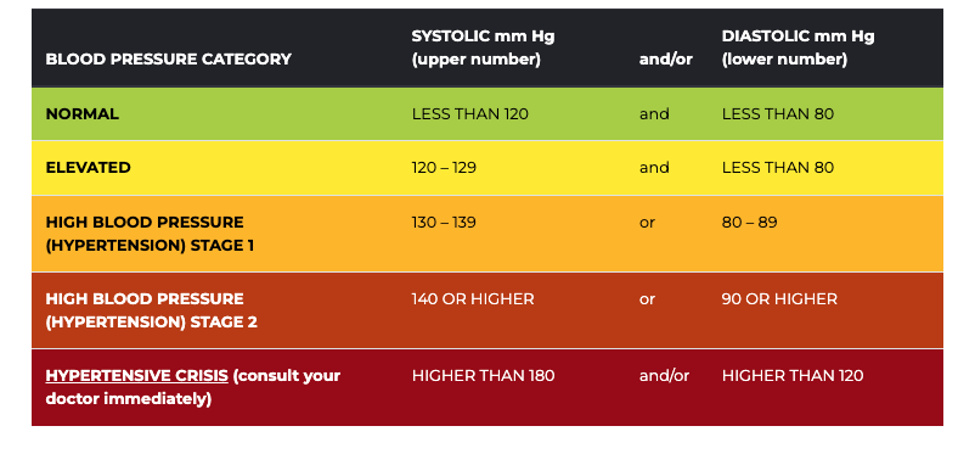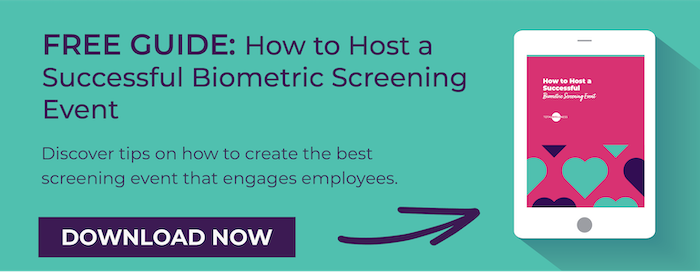Biometric screenings can easily improve your employees’ health.
What is this screening, you ask?
It’s a way to collect essential health data that can indicate whether a person is healthy or has a health issue they should be looking into. It’s often done on-site for companies looking to gather insight into their employees’ health.
Our biometric screenings include a variety of health measures such as:
- Cholesterol
- Blood sugar
- Blood pressure
- Body Mass Index (BMI)
- Waist circumference
For example, if someone is screened and it comes back that they have sky-high blood sugar, their cholesterol is through the roof, and they’re in a hypertensive crisis, they need to be seen by a doctor immediately. Sometimes, health issues don’t show any symptoms before it’s much too late.
That’s why we promote and offer biometric screenings to clients across the United States. It helps save lives and change lives for the better.
Below, we wanted to share our 2022 nationwide results with you from these life-saving screenings.
What the Numbers Say About Employee Health
As part of our process, TotalWellness offers aggregate reports of each company’s biometric health screenings. This makes it easier to look at the big picture of employee wellness with ease to see where your company’s employees may be struggling health-wise.
Here’s a look at our results collection from last year:

Blood Pressure
Blood pressure refers to the pressure of blood against the inside walls of your arteries, which carries essential blood to other parts of the body. The only way to know if your blood pressure is abnormal is to have it checked by a medical professional.
Note that blood pressure is recorded as two numbers:
- Systolic blood pressure (the first number) – shows how much pressure your blood is exerting against your artery walls as your heart beats.
- Diastolic blood pressure (the second number) – shows how much pressure your blood is exerting against your artery walls as the heart rests.
 Source: American Heart Association
Source: American Heart Association
What Our Research Found
Of those who participated, just over 41% had normal blood pressure.
Other readings found:
- 4% had elevated BP
- 32% had Stage 1 hypertension
- Nearly 12% had Stage 2 hypertension
- 13% were in hypertensive crisis
For those ages 50 and older, more concern is placed on the systolic number as a major risk factor for cardiovascular disease, according to the American Heart Association. That’s why it’s essential to have ongoing readings throughout the year to keep track of normal blood pressure levels
Body Mass Index (BMI)
BMI is a number calculated from height and weight to identify potential body weight concerns. BMI numbers are good to know because excessive weight can indicate current and potential health problems.
What Our Research Found
Of our participants, 23.9% were of normal weight. Additionally:
- 39% had a high weight
- 11% had a very high weight
- 58% of participants were overweight
It’s important to note that a higher BMI means a higher risk of diseases and health issues like gallstones, high blood pressure, and heart disease.
Cholesterol
Cholesterol — a fat-like substance found in the blood — can come both from our bodies and from the food we eat.
What Our Research Found
Of all our participants, 69% have optimal total cholesterol. Additionally:
- 9% had borderline high total cholesterol
- 9% had high total cholesterol
HDL Cholesterol (“Good” Cholesterol)
- 31% have optimal HDL cholesterol
- 5% have near-optimal HDL cholesterol
- 17% had low HDL cholesterol
LDL Cholesterol (“Bad” Cholesterol)
- 8% have optimal LDL cholesterol
- 4% have near-optimal LDL cholesterol
- 9% have borderline high LDL cholesterol
- 3% have high LDL cholesterol
- 4% have very high LDL cholesterol
Every four to six years it’s recommended healthy adults have cholesterol levels checked, according to the CDC. Those with a history of high cholesterol or heart problems should be tested more frequently.
Glucose
This test measures the amount of sugar known as glucose that’s in your blood. As a major source of energy for the body, it’s important for it to stay balanced.
What Our Research Found
Of the participants, 71% had a healthy and normal reading. Additionally:
- 23% were pre-diabetic
- 4% were diabetic
Glucose is derived from the Greek word for "sweet” and comes from the foods you eat. If you often feel tired, and thirsty, and urinate often, have your doctor check your glucose levels to ensure you’re not pre-diabetic or diabetic.
Waist Circumference
Along with BMI measurements, waist circumference is another useful obesity risk measurement. When most of an employee’s fat is around the waist and not the hips, their risk of type 2 diabetes and heart disease is higher.
What Our Research Found
- Nearly 60% had a normal waist circumference
- 40% had a high waist circumference
To manage weight, eating well and moving daily are two excellent ways to stay trim and reduce serious risks to heart health. If you’re still struggling to lose weight, it could be related to hormone issues, so speak to your doctor about other support options.
Keep Your Employees’ Health as a Priority
If you want lively, vibrant employees, their health must be a priority. That means giving them time off for doctor’s appointments, encouraging movement, and offering useful services like biometric screenings to stay in the know when it comes to their health.
Three final thoughts on helping your employees stay healthy:
- Offer biometric screenings - By offering these screenings at your workplace, you get a baseline of your employees’ health, which can help you further sculpt wellness programs and initiatives.
- Encourage movement - The body needs daily movement. Whether you encourage this through walking clubs, walking meetings, taking the stairs, or by providing gym memberships, your workers will appreciate the encouragement to stay well.
- Provide healthy snacks and foods - Say no to donuts and sugary coffees for morning meetings. Instead, offer fruit bowls and tea options for those who need a caffeine fix. It will keep workers feeling light and energetic!
Your workplace is full of different people with unique body types and health issues. Keep them feeling healthy and at their best by providing a variety of wellness initiatives. Health screenings are just one simple way to do it!
Want to learn more about biometric screenings? You can find more details on our biometric screening information page.



